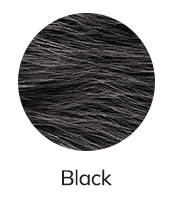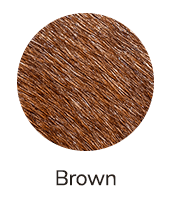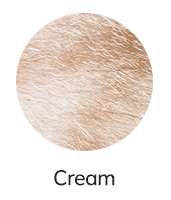Labrador Retriever: Your Complete Guide
Labrador retrievers have long been at the top of the AKC’s most popular dog breeds list. This is likely because they have amazing temperaments, make great family pets, adaptable, and highly trainable dogs that excel at service dog work and other working dog roles.
Today, we’re going to do a deep dive into this breed and share with you everything you’ll want to know about the Labrador retriever. You’ll learn about this breed’s history, temperament, energy levels, health, grooming needs, and much more. Keep reading to find out if the Lab is the right dog breed for you.
Quick Look at the Labrador Retriever
The chart below provides a basic overview of the Labrador retriever. It should give you an idea of whether or not this breed could be a good fit. You will find a more detailed overview of each point in the coming parts of our article.
| Weight/Height | 55-80 lbs; 21.5-24.5 in |
| Coat Type | Short, straight, double-layered |
| Grooming Needs | |
| Shedding | |
| Temperament | Friendly, outgoing, playful |
| Good With Kids | |
| Good With Other Animals | |
| Intelligence | |
| Easy to Train | |
| Energy Level | |
| Barking Habits | |
| Lifespan | 11-13 years |
What Is the History of Labrador Retrievers?
The Labrador retriever is descended from a breed called the St. John’s water dog. The St. John’s water dog excelled at swimming, diving, and retrieving and was used by fishermen in Newfoundland, Canada. These dogs would haul nets and even retrieve fish that had slipped off their hooks.
Around the 1830s, the St. John’s water dog was discovered by British nobles who wanted to use the dogs for hunting fowl, especially ducks. The Brits continued to breed these dogs and thus the Labrador retriever was born. It is believed that the name “Labrador” was popularized by the Earl of Malmesbury who didn’t seem to have a tight grasp on Canadian geography.
Labrador was the geographical name for the mainland portion of Newfoundland and Labrador province – so it’s not completely unrelated to where the breed came from, but the St. John’s water dogs would’ve originated from Newfoundland Island, not mainland Newfoundland.
Today’s Labradors remain a favorite choice for families looking for an affectionate, loyal companion. They also excel at many working dog roles, such as service dog work, search and rescue, and detection.
What Do Labrador Retrievers Look Like?




Labradors come in three standard colors: black, chocolate, and yellow. Though black Labs and chocolate Labs have very even coat coloring, yellow Labradors’ coats tend to be a darker fawn color on the ears and along the back. Meanwhile, the chest, sides, and belly may be a lighter shade similar to cream.
To make it even more confusing, cream-colored Labradors also exist! Cream Labradors look essentially the same as yellow Labradors except they are paler and lack the darker fawn shading commonly found on the body and ears. Cream is not considered a standard color by the AKC, though many creams may fall under the yellow umbrella.
Similar to cream, fox red is another non-standard color for Labs. This shade is closest to the fawn color on our chart and is a deep golden color. Unlike yellow Labs which are a mixture of cream and fawn, a red Lab’s coloring is more even throughout.
Labradors are large dogs with short, sleek coats, triangle-shaped ears, and thick but not bushy tails. Yellow Labs are often born with black noses, but they may turn pink over time. Meanwhile, chocolate Labs tend to have brown noses, and black Labs tend to have black noses. Most Labradors have brown eyes, but some can also have amber, hazel, or green eyes.
What Size Is a Labrador Retriever?
Labradors are considered to be large breed dogs. Males stand between 22.5 and 24.5 inches tall and weigh between 65 and 80 pounds. Females may be slightly smaller and stand between 21.5 and 23.5 inches and weigh between 55 and 70 pounds.
What Is a Labrador Retriever’s Coat Type and Length?
Labrador retrievers have a double-layered coat made up of short, soft hair. The outer layer is made up of guard hairs that keep dirt and water out, and the inner layer provides insulation during cold months.
When the weather is warm, the inner coat is effective in trapping cool air against the dog’s skin. Though this breed doesn’t feel especially oily, the Labrador’s coat is well-known for being water-repellent.
What Is a Labrador Retriever’s Temperament?
Labrador retrievers have fantastic temperaments. They get along with anyone and everyone and they love to play. Their friendly and eager-to-please nature is a big part of the typical labrador retriever personality, making them one of the most beloved breeds. They also tend to be people-oriented and are eager to please. Labs love spending time with their families and are easy to train.
Are Labrador Retrievers Good With Kids?
Labrador retrievers are one of the best family dogs you could ever ask for. They get along with children quite well and will be keen on joining activities such as swimming, hiking, jogging, biking, or really anything outdoors. Labs love nothing more than a game of fetch, and many enjoy playing tug as well.
Some children may overwhelm their dogs with love (hugging, kissing, laying on them), and the Labrador retriever is often tolerant of this. That said, it’s important that parents ensure their children are respecting the dog’s boundaries. Even dogs don’t like being bothered 24/7!
Furthermore, each dog is an individual. While many Labs are tolerant, there may be some that aren’t. Parents should always supervise their children’s interactions with dogs to ensure the safety of both the dog and the child.
Are Labrador Retrievers Good With Other Animals?
Labradors have a prey drive and many will chase squirrels and other rodents out in the yard, but you’d be surprised to find out that many can be trained to get along with or leave alone prey animals within the home.
If you enjoy keeping rabbits, guinea pigs, hamsters, ferrets, chinchillas, or any other such animal that may be considered a prey animal, it is possible to have a Labrador that leaves these pets alone. Similarly, Labradors usually get along with cats and other dogs. Socialization and training from a young age will help Labradors be friendly with a variety of other animals.
Are Labrador Retrievers Aggressive?
Labradors are not known for being aggressive, but aggression can exist in any breed and is usually a result of poor socialization or mistreatment. As long as puppies are treated with love and respect and socialized to as many people, pets, sights, sounds, and objects as possible, they are likely to grow up to be mentally stable, well-adjusted dogs.
Do Labrador Retrievers Bark?
Labrador retrievers are not known for being especially vocal dogs. They are moderate barkers who usually bark to alert. They’ll let you know if someone has come home or if a visitor is at the door.
Some Labs may also bark when they want something, such as to go potty or be let back inside. A Labrador would probably be okay in an apartment with noise restrictions as they usually only bark when you come home or when someone is at the door.
Are Labrador Retrievers Affectionate?
Labrador retrievers are a very affectionate breed. They’re super friendly and tend to love everyone they meet. Some Labs are quite cuddly, but others are less into cuddling and more into pets or scratches. In general, they tend to love getting attention.
Are Labrador Retrievers Intelligent?
Labrador retrievers are a very intelligent breed, which is part of the reason they’re in high demand as working dogs. Labs are commonly seen doing service work such as guiding the blind. They’re also used for search and rescue missions and for drug and bomb detection.
Beyond this, Labrador retrievers have a very high emotional intelligence. They are aware of their owner’s emotions and will come to comfort them naturally if they sense that the owner is feeling down. This trait not only makes them affectionate dogs but also a natural emotional support animal.
Are Labrador Retrievers Energetic?
Part of the sporting group, Labradors have a lot of energy. As such they tend to be medium to high-energy dogs but are especially exuberant during their youth. Luckily, there’s nothing they love to do more than play fetch (it’s literally in their name), which can help tire them out.
Labradors will need anywhere from one to two hours of exercise per day, depending on their personality. Some Labs are more relaxed whereas others are very energetic.
Another thing that these dogs need is mental stimulation! Exercise is a necessity, but on its own, it isn’t always enough to calm an exuberant dog. Some dogs need their brains stimulated. This can be done via training sessions, games (like hide and seek), or puzzle toys.
Are Labrador Retrievers Easy to Train?
Labrador retrievers are easy to train largely because they are highly motivated by food or tennis balls, and they are total people pleasers! In fact, they are a good option for first-time dog owners because of how trainable they are.
If you want to teach a Labrador complex skills or tricks, they are more than up to the task! After all, Labs are frequently chosen for service work. Beyond that, they can be trained to excel in a variety of dog sports, including agility, obedience, dock diving, flyball, and even field trials.
Are Labrador Retrievers Good Watchdogs?
Labrador retrievers typically bark at people and cars who enter their domain, so in that sense, they are good watchdogs. However, Labs are usually quite friendly with everyone they meet, so they aren’t very good guard dogs. On the other hand, Labradors are big, which can be intimidating to some.
Are Labrador Retrievers Good Service Dogs?
Labrador retrievers are a popular choice of service dog because of how trainable they are. Labs are also quite versatile in the work they can do. They can be guide dogs, psychiatric service dogs, mobility assistance dogs, and much more.
Similarly, they make wonderful emotional support animals because they are very people-oriented. Labradors love to be near their families and can be the perfect companion for someone who is struggling with their mental health.
If you’re interested in training a therapy dog, the Labrador retriever is more than up for the task. Not only is this breed highly trainable, but they also have a fantastic demeanor for therapy visits. They’re great with kids and warm up to strangers almost immediately. Their love for people does not discriminate, so they can bring a lot of comfort to those who need it.
How to Care for a Labrador Retriever
Labrador retrievers are low-maintenance. Aside from the basics (teeth brushing and nail trimming), they require occasional brushing and bathing, and that’s about it.
Do You Need to Groom a Labrador Retriever?
Labrador retrievers are very low-maintenance. They don’t require professional grooming and honestly don’t even need to be brushed all that often as their short fur is not in danger of getting matted or tangled.
However, Labs do shed a lot, so brushing once a week can help reduce hair around the house. During the shedding season, their fur may come out in clumps, and this is when brushing often can be helpful.
These dogs need to be bathed only if they start to smell. Bathing can also be helpful in loosening fur during shedding season. Otherwise, Labradors should have their ears checked regularly for infection, their teeth brushed daily, and their nails trimmed as needed.
Do Labrador Retrievers Shed?
Labrador retrievers shed a lot. This is not a breed you want to get if you care about having fur all over your…everything. Labradors are not considered a “hypoallergenic” dog breed (there is no such thing), but there was one study that found Labradors shed fewer allergens than poodles, a breed often referred to as “hypoallergenic.”
If you have pet allergies and would like to own a Labrador, we would recommend speaking with an allergist and possibly having tests done to see which canine allergen you’re allergic to. Since Labradors are a very popular breed, you might be able to find one you could interact with. If you don’t have any friends or family who own a Lab, try dropping by a dog park or a shelter.
In fact, adopting a Labrador from a shelter would give you a better chance to meet and spend time with the dog and see if they trigger your allergies. This way, you’d be less likely to bring home a dog you can’t keep.
What Health Problems Do Labrador Retrievers Have?
Labrador retrievers are at risk for the following health problems: hip and elbow dysplasia, centronuclear myopathy, progressive retinal atrophy, arthritis, hypothyroidism, bloat, and exercise-induced collapse (EIC).
If you plan on purchasing a Labrador from a breeder, it’s important to ensure that the breeder is responsible. Responsible breeders are selective about which dogs get bred and always choose the healthiest animals to breed. A responsible breeder will always health test the parent animals and will also be willing to share the results of those tests with you.
How Long Do Labrador Retrievers Live?
Labrador retrievers have a lifespan of about 11 to 13 years, which is the typical labrador retriever lifespan for this breed.
What Should a Labrador Retriever Eat?
A Labrador retriever should eat the healthiest dog food you have access to. The best foods meet AAFCO guidelines, are formulated by a board-certified veterinary nutritionist, and undergo feeding trials. Be sure to pick a food that is also appropriate for your dog’s life stage (puppy, adult, or senior).
To determine how much your dog should eat, you can follow the guidelines on the back of the dog food package or calculate your dog’s caloric needs yourself. Monitor your dog’s weight and adjust the food portion as needed.
Is a Labrador Retriever the Right Dog for Me?
Labrador retrievers have such incredible temperaments and are so versatile that we’re hard-pressed to imagine they could be the wrong dog for anyone. If you can’t commit to a Lab’s exercise needs, don’t want a large-breed dog, or don’t like dogs that shed a ton, then maybe the Labrador retriever isn’t for you.
Otherwise, this dog is going to be a good fit for most lifestyles. If you’re looking for a companionable, friendly dog that is easy to train, then the Labrador is going to be a great choice. Review everything we’ve discussed above to determine if the Labrador retriever is the right dog breed for you.